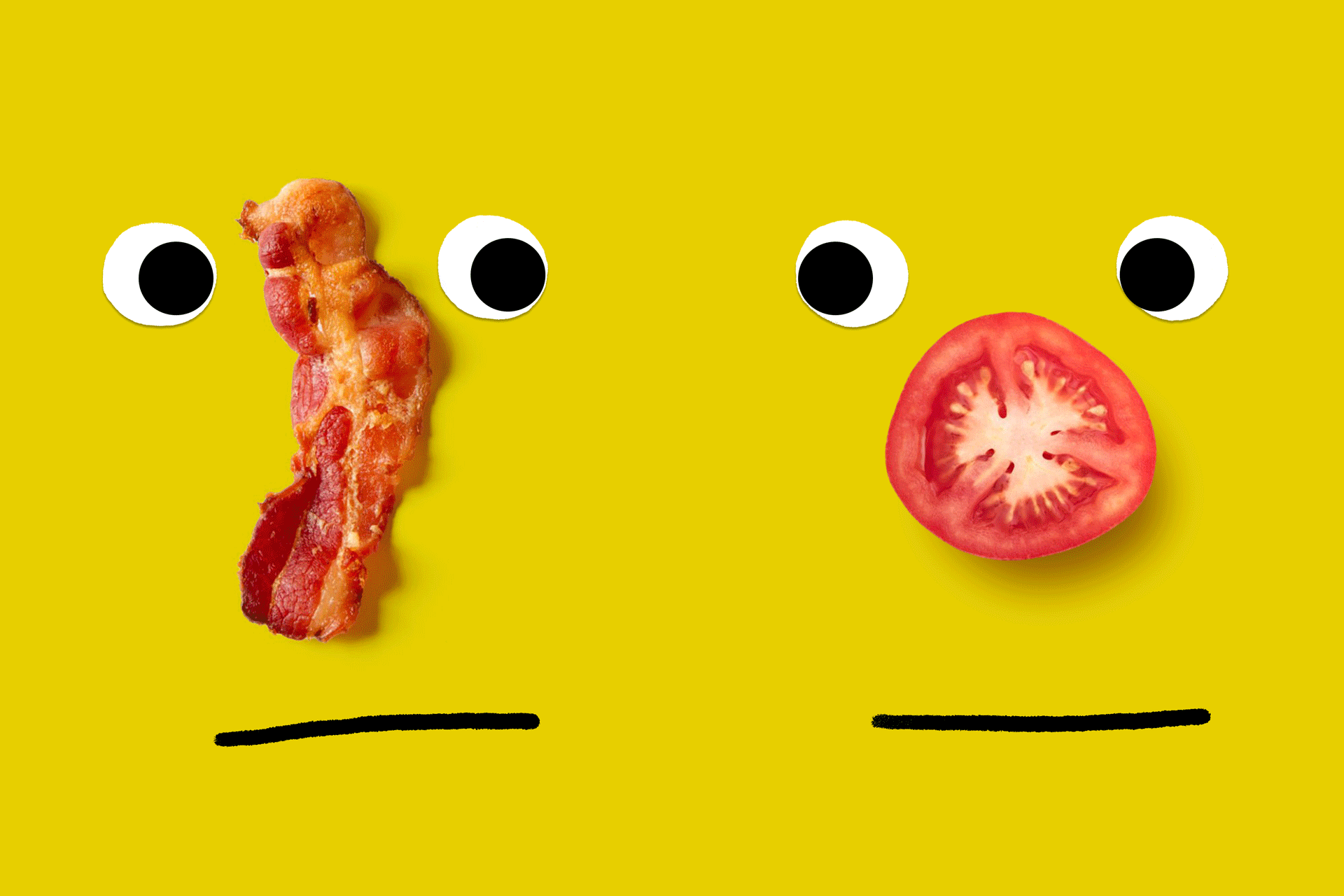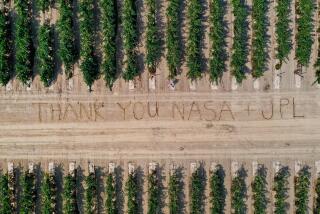Goal: Artificial Nose for Produce Shopper
- Share via
ORONO, Maine — The rotting bananas in sealed jars in John Vetelino’s lab mark his first step toward developing an “electronic nose” he hopes will sniff out fruit and vegetables at their peak of ripeness.
By zeroing in on a telltale gas of the ripening process, Vetelino and a team of scientists are working to create an inexpensive, handheld device that will eliminate the guesswork for consumers who rely on color and texture and hope for the best.
A professor of electrical engineering at the University of Maine, Vetelino has worked on sensors to detect smokestack pollutants and chemical and biological agents. His new project--analyzing the gas emissions of bananas--is clearly intended to benefit the most discriminating buyers of fruit and vegetables.
It’s easy for Vetelino to speak from experience in recounting the frustration of buying fruit, only to be disappointed by that first bite.
“It’ll look completely ripe, but there will be no taste to it at all. It’s just blah,” he said. “You pay good dollars, and then all of a sudden it’s like you’re biting into some cardboard. I’ve gone right back to the supermarket and returned what I’ve bought.”
Other scientists have focused on gas emissions to measure fruit quality, but Vetelino says his team is the first to focus solely on ethylene, a gas that scientists say is universally associated with ripening fruits and vegetables.
The specialists on Vetelino’s team include physicists responsible for creating a metal film that reacts to gases when electrically charged, and food scientists who know fruits and vegetables inside and out.
The lab’s equipment includes gas chromatographs used to measure the concentration of ethylene, gas flow controllers used to regulate the flow of the ethylene, and a sprawling set of vacuum chambers used to make the metal film.
And, of course, there are bananas, chosen specifically because their changing colors allow the ripening process to be followed visually.
Relying on science to measure ripeness is not entirely new.
Past tools have ranged from an electronic melon thumper that records the vibrations to devices that use magnetic resonance imaging borrowed from medical applications to measure a fruit’s sugar content.
One of the most recent is a handheld device, by Cyrano Sciences of Pasadena, that resembles the network of receptors inside the human nose by using 32 sensors to detect the pattern of gases emitted by ripening fruit. The initial cost of about $8,000 makes it one of the least expensive devices available to food packaging companies and other industries, the company says.
The University of Maine team hopes to further reduce the cost by focusing on just one gas instead of 32, said Al Bushway, a food scientist working with Vetelino’s team.
A scientist from Cyrano says the focus on ethylene is not a bad idea.
“If you had to pick one particular chemical, it’s not a bad one to pick,” said Bruce Hermann, a chemist who directs applications engineering for Cyrano.
But focusing on just one gas could have limitations, scientists say.
“In some fruits, there’s a burst of ethylene as it ripens. In other fruits it goes up and down, so you can’t tell what’s going on,” said James Simon, a Purdue University scientist who has developed different types of fruit ripeness sensors.
And some in the food products industry are skeptical about the value of ethylene measurements.
“It is useful, and it does have some application, as long as that is not the only piece of the decision,” said Peter Goulet, director of produce merchandising for Hannaford Bros., a regional grocery chain.
For one thing, fruit doesn’t always have the best taste at the exact point of peak ripeness, he said.
Bushway, the University of Maine food scientist, said ethylene is still worth measuring, since its concentrations can vary greatly during the ripening of certain fruits, such as bananas, tomatoes and apples.
Vetelino, who would like to eventually market his device to retail consumers, has a larger goal in mind anyway. He wants to develop an entire class of more discriminating sensors.
“The ‘pie in the sky’ is to develop a sensor that would respond to one gas at the exclusion of all others,” he said.
To meet that challenge, Vetelino and his team are charging a semiconductor film with an electric current that he says is more likely to react in different ways with different gas molecules. They are also looking for the right amount of heat and the right amount of gold and other metals to add to the film to break down the ethylene molecules so they can react with the electric current.
Finding the combination that gives a consistent reading for ethylene would open the door to other gas-specific sensors, Vetelino said.
Those could be used for medical diagnoses or to improve on the chemical and biological agent sensors used in the Persian Gulf War, he said. Those sensors were sometimes set off by bug spray.
“Realistically, it might be a while before we’re able to achieve that,” Vetelino said, “but we’re hoping this [new] technology will give us a big quantum step forward.”






